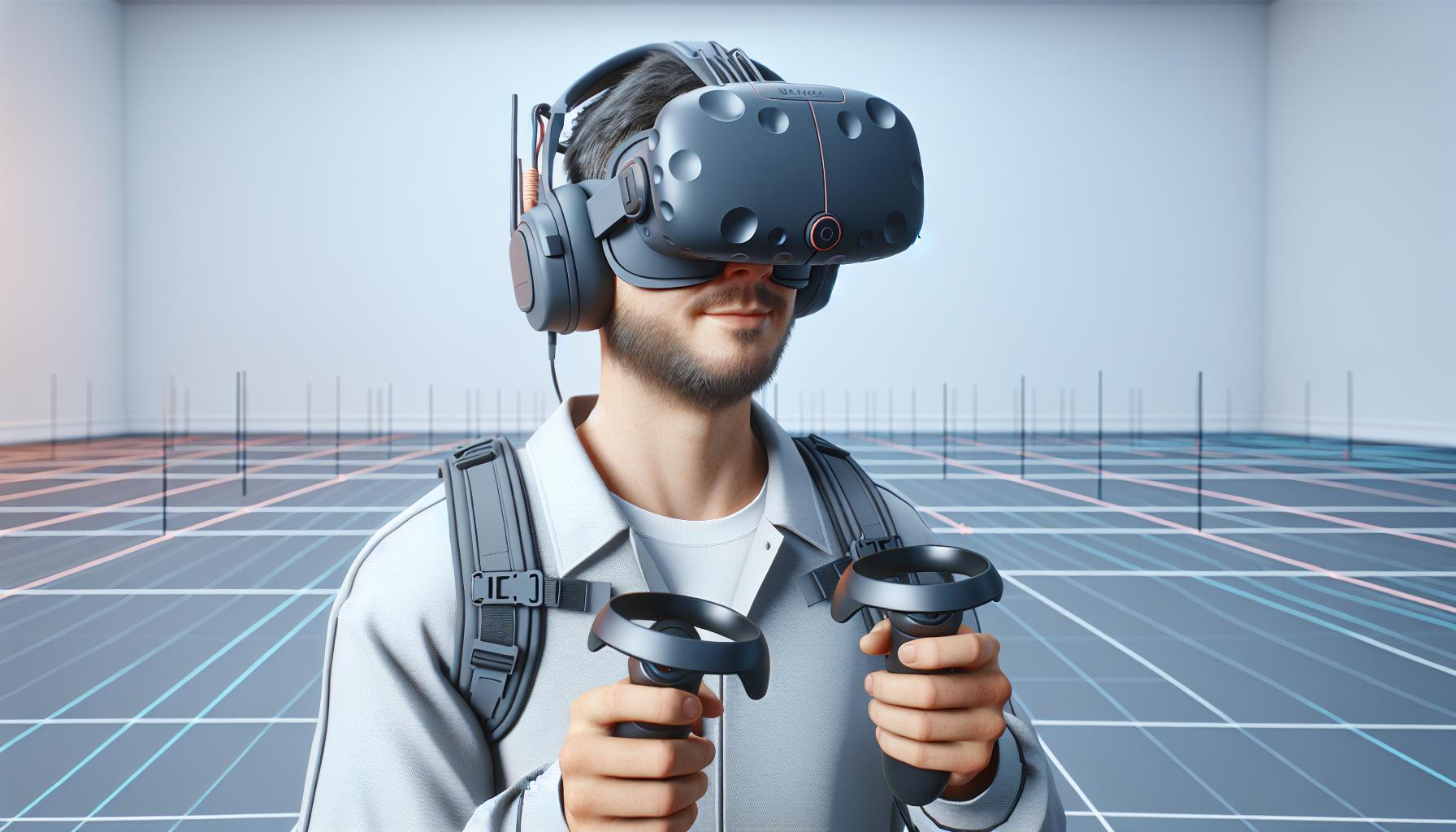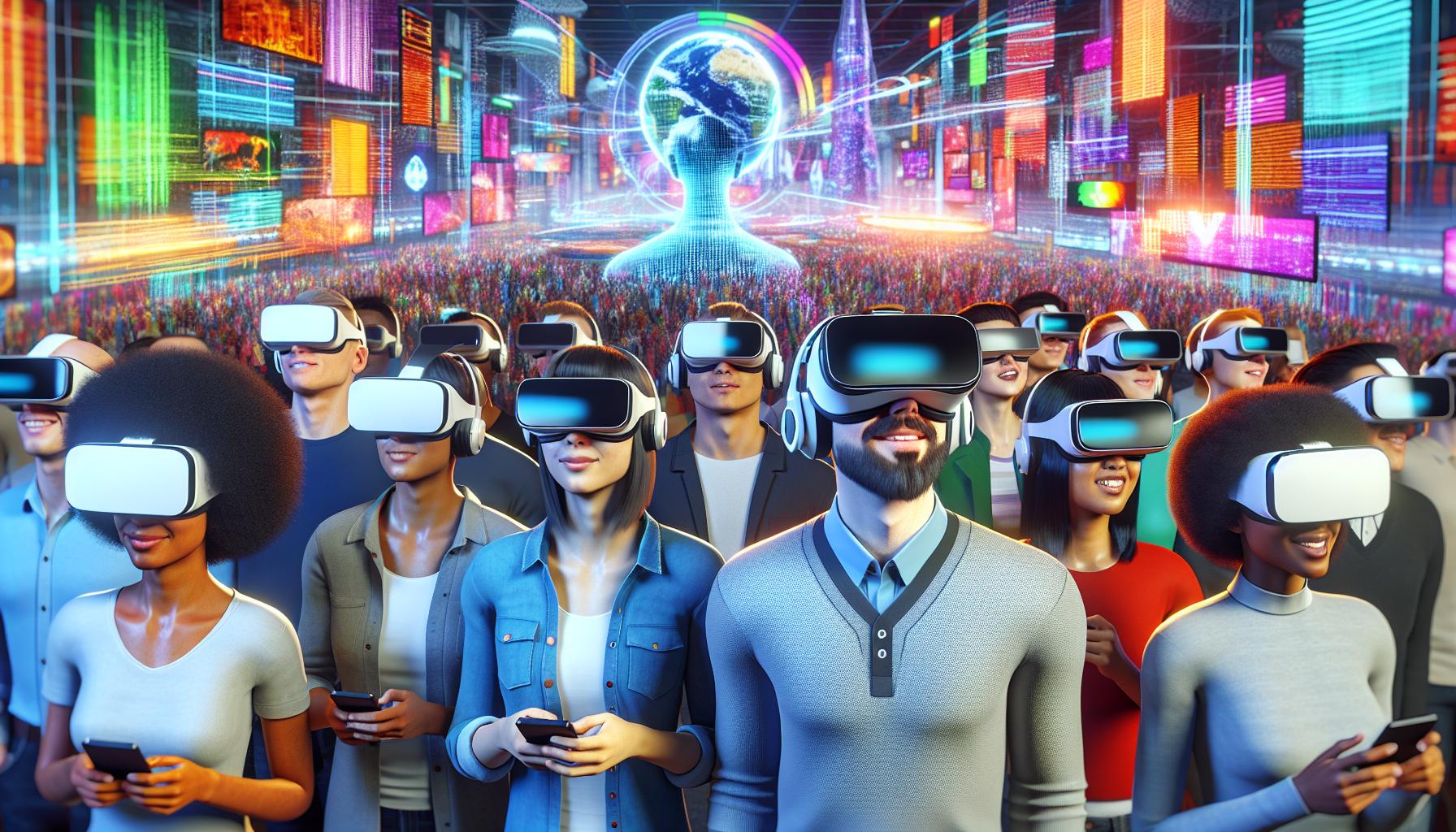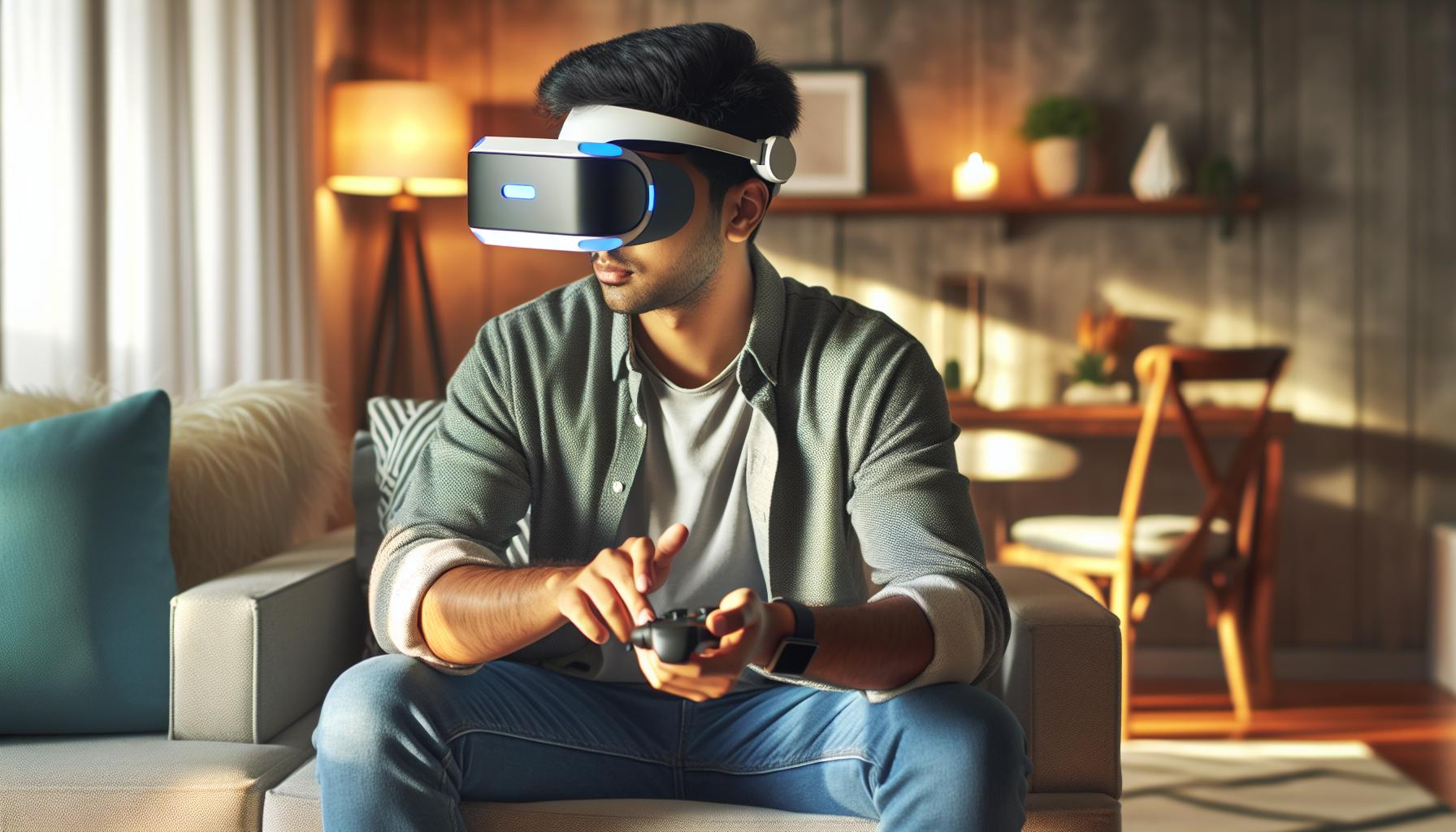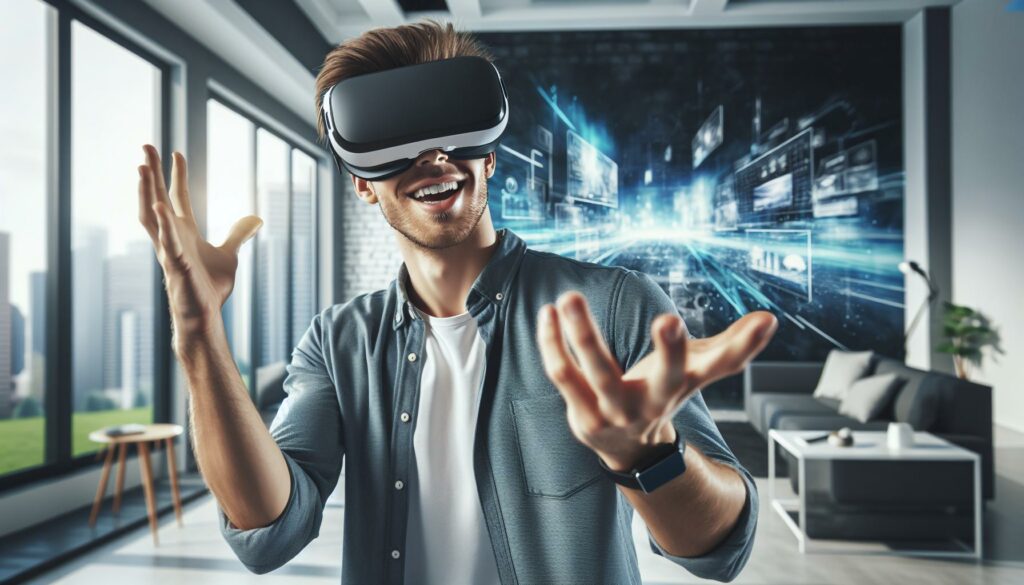Virtual Reality has transformed from a sci-fi fantasy into an accessible technology that’s revolutionizing how people work, play and connect. From immersive gaming experiences to virtual workplace meetings, VR headsets are opening doors to endless digital possibilities.
Stepping into the virtual world isn’t just about strapping on a headset and diving in – it’s about unlocking a new dimension of human interaction and creativity. Whether someone’s battling dragons in a fantasy realm or designing architectural masterpieces in a virtual studio, VR technology offers an unparalleled level of engagement that traditional screens simply can’t match. As headsets become more affordable and user-friendly, more people are discovering just how easy and exciting it is to embrace this cutting-edge technology.
Using VR
Virtual Reality creates an artificial 3D environment that simulates real-world experiences through specialized hardware and software. The technology tracks user movements in real-time while delivering immersive visual and auditory feedback.
Key Components of VR Systems
VR systems integrate several essential hardware components to deliver immersive experiences:
- Head-Mounted Display (HMD): Specialized goggles house high-resolution displays with lenses that create stereoscopic 3D visuals
- Motion Controllers: Hand-held devices track hand movements for precise interaction with virtual objects
- Position Sensors: External cameras or base stations monitor user movement in physical space
- Processing Unit: Dedicated graphics cards render complex 3D environments in real-time
- Audio System: Spatial sound technology provides directional audio cues matching visual elements
Types of VR Headsets Available Today
Modern VR headsets fall into three distinct categories:
- Tethered VR: High-end systems like Valve Index connect to powerful PCs offering premium graphics performance
- Standalone VR: All-in-one devices like Meta Quest operate independently without external hardware requirements
- Mobile VR: Smartphone-compatible headsets provide entry-level VR experiences using phone displays
- Mixed Reality: Advanced headsets like HP Reverb G2 combine virtual elements with real-world environments
| Type | Resolution Range | Refresh Rate | Price Range |
|---|---|---|---|
| Tethered | 2160×2160 – 2880×1600 | 90-144 Hz | $399-$999 |
| Standalone | 1832×1920 – 2160×2160 | 72-120 Hz | $299-$499 |
| Mobile | 1080×1200 – 2560×1440 | 60-75 Hz | $15-$99 |
Setting Up Your VR Equipment

Proper setup of VR equipment ensures optimal performance and safety during virtual experiences. The configuration process involves creating a dedicated space and following manufacturer-specific guidelines for device setup.
Space Requirements and Safety Considerations
A clear play area of 6.5 x 6.5 feet creates an optimal VR experience space. Users remove furniture, cables, or obstacles from the designated area to prevent accidents. Motion sensors require proper lighting conditions between 100-500 lux for accurate tracking. A minimum ceiling height of 7 feet accommodates full-range movements like jumping or reaching up. Physical barriers like walls, furniture, or windows remain at least 3 feet away from the play boundary. Carpeted floors provide better stability than hard surfaces during VR sessions.
Configuring Your VR Device
The initial VR setup starts with charging the headset and controllers to 100% capacity. Users install the companion software on their PC or mobile device to access required firmware updates. The device calibration process includes adjusting the interpupillary distance (IPD) between 58-72mm for clear visuals. Room-scale setup involves mapping the play area boundaries through the guardian system or chaperone setup. Motion controllers require pairing via Bluetooth connection and sensor calibration for accurate hand tracking. Regular firmware updates maintain optimal performance and compatibility with new VR applications.
Popular VR Applications and Experiences

Virtual Reality applications span diverse sectors, offering immersive experiences that transform how people interact with digital content. These applications leverage VR technology to create engaging environments for entertainment, learning, and skill development.
Gaming and Entertainment
Top-rated VR games include Half-Life: Alyx, Beat Saber, and Population: One, which demonstrate the platform’s gaming capabilities. Steam VR hosts 8,000+ VR titles across genres like action, simulation, and puzzle-solving. Entertainment platforms such as BigScreen VR enable users to watch movies on virtual cinema screens with friends in customizable theaters. Social VR apps like VRChat connect 40,000+ daily active users in virtual spaces for conversations, events, and shared experiences. Creative applications including Tilt Brush and SculptrVR let users create 3D artwork in boundless virtual canvases.
Training and Education
Educational VR platforms transform learning through interactive 3D visualizations of complex concepts. Medical students practice surgical procedures in risk-free environments using apps like Touch Surgery. Engineering programs utilize VR for design reviews, with platforms like The Wild enabling real-time collaboration on 3D models. Language learning apps such as Mondly VR facilitate immersive conversations with AI-powered native speakers. Museums offer virtual tours through platforms like Versailles VR, reaching 500,000+ monthly visitors. Corporate training programs implement VR simulations for safety protocols, customer service scenarios, and equipment operation across multiple industries.
Health and Safety While Using VR

Using VR equipment safely requires attention to specific health guidelines. Following these practices minimizes discomfort during immersive experiences.
Motion Sickness Prevention
VR motion sickness occurs when visual input conflicts with the body’s sense of movement. Taking 15-minute breaks every 30 minutes reduces symptoms such as dizziness or nausea. Starting with stationary VR experiences builds tolerance before moving to more dynamic content. Adjusting the headset’s interpupillary distance (IPD) ensures proper image alignment for each eye. Setting frame rates to 90Hz or higher creates smoother motion transitions. Maintaining a consistent room temperature at 68-72°F (20-22°C) helps prevent physical discomfort during VR sessions.
Recommended Usage Limits
Adults limit VR sessions to 60 minutes with 15-minute breaks between sessions. Children ages 13+ restrict usage to 30-minute intervals with 20-minute breaks. Users wearing corrective lenses incorporate 5-minute eye rest periods every 20 minutes. Morning or early afternoon sessions prove more comfortable than evening use. Physical activity breaks include stretching neck muscles head rotations eye exercises. The body adapts to VR experiences after 3-4 weeks of regular short duration sessions.
| User Age | Maximum Session Length | Required Break Time |
|---|---|---|
| Adults | 60 minutes | 15 minutes |
| Teens 13+ | 30 minutes | 20 minutes |
| Children | Not recommended | N/A |
The Future of Virtual Reality Technology
Virtual reality technology continues to evolve with groundbreaking innovations transforming how people interact with digital environments. The integration of advanced sensors, improved display technology, and sophisticated software creates increasingly immersive experiences.
Upcoming Innovations
Advanced haptic feedback systems enable users to feel virtual objects through specialized gloves equipped with micro-actuators. Eye-tracking technology in next-generation headsets adjusts graphics rendering based on where users look, creating more natural depth perception. Brain-computer interfaces translate neural signals into VR commands, eliminating the need for physical controllers.
Wireless VR headsets incorporate 5G connectivity for cloud-rendered experiences at 8K resolution per eye. AI-powered environments adapt in real-time to user behavior, generating personalized content on demand. Holographic displays project 3D images directly into physical spaces without requiring headsets.
| Innovation | Expected Timeline | Key Benefit |
|---|---|---|
| Haptic Gloves | 2024 | Tactile Feedback |
| Neural Interface | 2025 | Direct Control |
| 8K Per Eye | 2024 | Ultra-HD Clarity |
| Adaptive AI | 2023-2024 | Dynamic Content |
| Holographic VR | 2026 | Headset-free Experience |
Virtual Reality Usage
Using VR has evolved from a futuristic concept into a transformative technology that’s reshaping how people interact with digital content. From gaming and social connections to education and professional training VR continues to break new ground in creating immersive experiences.
As the technology becomes more accessible and user-friendly more people are discovering its potential. With upcoming innovations like haptic feedback systems eye-tracking technology and wireless capabilities VR is poised to become an even more integral part of daily life.
The future of VR looks promising with continuous improvements in hardware comfort and functionality. By following proper safety guidelines and understanding setup requirements users can fully embrace this revolutionary technology that bridges the gap between physical and digital worlds.

